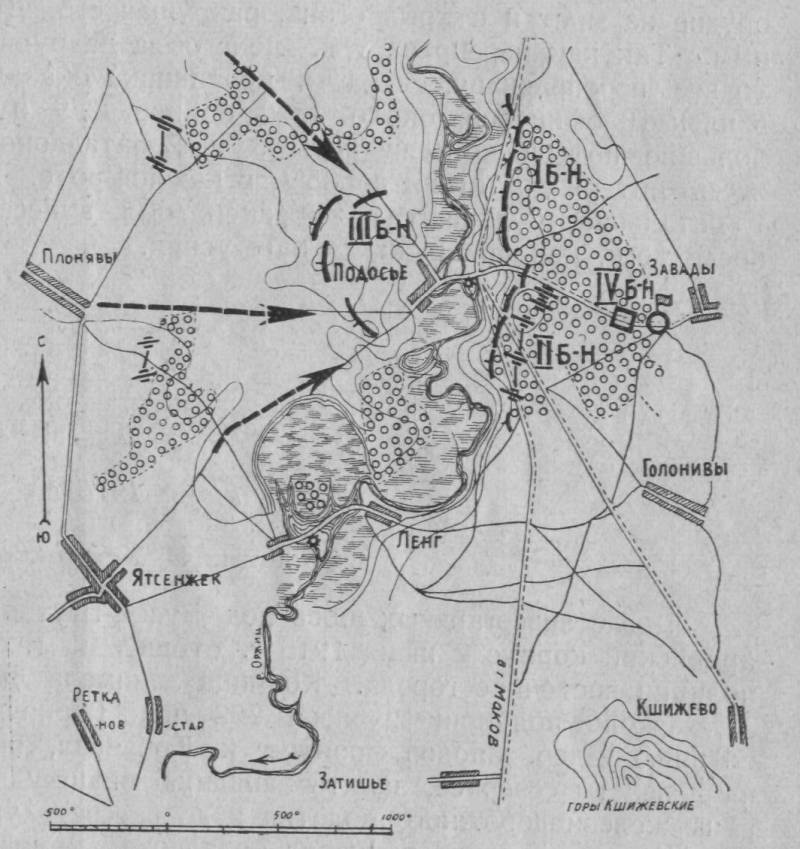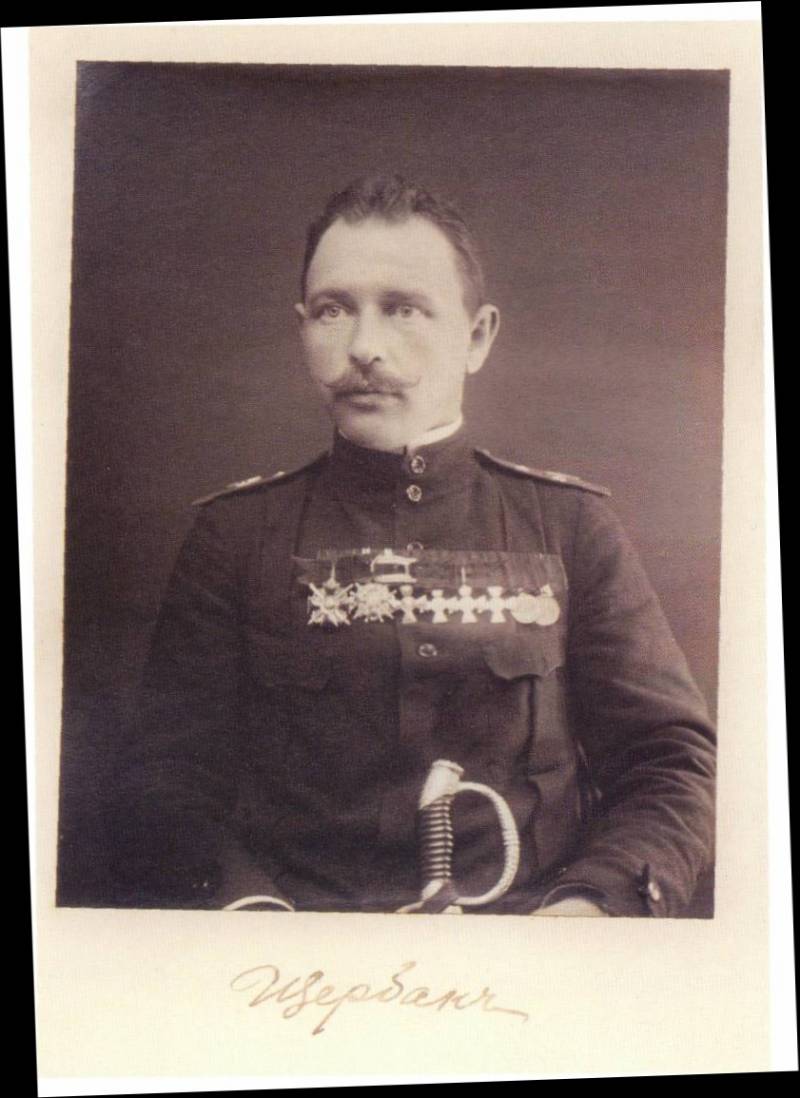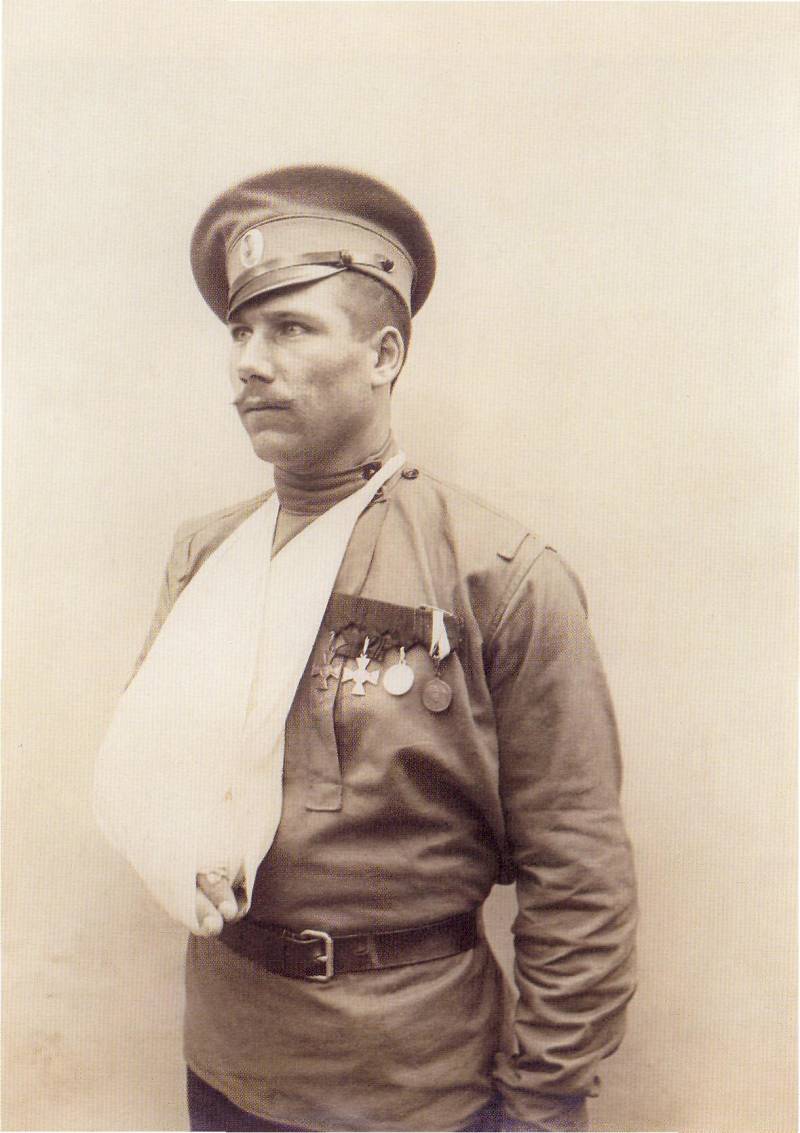Saving bayonet plug
The 7 th Siberian rifle regiment is one of the glorious units of the Russian imperial army. And this fact fully demonstrates the indicative and at the same time characteristic combat episode. stories parts.
It was a heavy summer of 1915 of the year, and on June 13, parts of the regiment occupied the guard watch lines. There were no reserves. The enemy (the Germans) grew stronger and more insistent, while the Russians became weaker and weaker. Despite the fact that the combat glory of the division (2-i Siberian Riflemen of the famous 1-th Siberian Army Corps), which arose in the fire of previous battles, forced the enemy to be careful, he was preparing for a decisive blow - concentrating troops and equipment.
On June 14, the enemy launched an energetic offensive along the entire front of the division. At night, the Siberians observed how the front of fires gradually expanded, successively going first into an arc, and then into a ring. It was clear that the Germans sought to surround the shooters, cutting off the retreat to the southeast, in the general direction of Rojana.
Finally, the Siberian riflemen received an order to hastily retreat: the enemy broke through to the west and north with significant forces. And the 7 th Siberian rifle regiment with an artillery battalion was assigned to the rearguard and, restraining the enemy, was to cover the withdrawal of the division.
The first and the nearest frontier suitable for this purpose was r. Orzhits. The marshy, rather deep, with a small number of crossings, it made it possible, defending itself with small forces, to restrain a superior enemy.
On July 1, the regiment took a position at vil. The bottom line. The 3 th battalion was advanced to the right bank, the 1 th battalion occupied the right wing on the left bank, and the 2 th battalion occupied the left bank. The artillery rose in the area of the 2 th battalion, while the 4 battalion remained in reserve to the west of der. Zavada. The position of the 1 and 2 battalions was at the commanding height of the left bank, along a road lined with trees and bushes.
Since the enemy was on his heels, the Siberian arrows did not have time to properly position themselves - and artillery fire began on the section of the 1 and 2 battalions.
In the first hour, the enemy launched an energetic offensive against the 3 Battalion (commander - Lieutenant Colonel Rossolyuk) from three sides: from the north-west, from the west and south-west. It was clear that the enemy was approaching 3 in large columns.
By 16 watch, the 3 th battalion was crushed, and the Germans rushed to the left bank on the shoulders of its remnants - to the site of the 2 battalion.
The 1 th battalion of Captain Trajan, who was under the brutal artillery fire all the time, could not help.
By 17-hours from the 2-th battalion of Captain Zhmakin there was only a small handful of fighters.
The 4 th battalion (reserve) under the command of Captain Vishnevsky, moving to the aid of 2, was stopped by the barrage of Germans. Our artillery was partially withdrawn from the position, and partly captured by the enemy, who, deploying Russian guns, prepared to open fire on the 1 and 4 battalions.
The enemy convoy moved through the bridge, moving south to the section of the 2 battalion. Artillery fire on the first battalion with the opening of barrage weakened.
And here commander initiative played the role. The commander of the left-flanking company of the 1 th battalion, under the guise of two offices, built his company in the bushes into the column through the branches and thus moved to the bridge - directly to the enemy's columns. With a bayonet attack, he managed to break the enemy column and make his way to the bridge. The narrow bridge did not allow the Germans to use their numerical superiority, and the fact that the enemies were mixed during the bayonet battle did not give the Germans the opportunity to open fire. The neighboring company of the 1 Battalion also quickly lined up in a column across the departments and rushed after the avant-garde company - to the bridge, where a hot hand-to-hand fight was in full swing, which formed a kind of traffic jam.
As a result, the 4 battalion managed to break through the enemy’s barrage, and, taking the remnants of the 3 battalion, fought off the Russian guns captured earlier by the Germans. The commander of one of the 3 battalion's mouths, Lieutenant Iosseliani, together with two gunners, turned one gun on the bridge and opened fire - destroying the structure. As a result, the Germans who had time to cross were cut off from their own people, and the crossing from the village. Leng was destroyed before the approach of the main forces of the Germans. Thus, the initiative of the company commanders and combatants, the saving bayonet on the bridge (which did not allow the Germans to overcome the bridge with their whole mass) and the counterattack of the Siberian riflemen’s battalion turned the unsuccessful rearguard battle (and with artillery loss) into a bright victory.
All enemy units that managed to cross were in the hands of the 7 Siberian fighters - a total of Germans were captured: 10 officers, about 1500 fighters and 9 machineguns captured. On the part of the Siberians, the greatest losses were suffered by the companies of the 3 and 2 battalions and the left-flank company of the 1 battalion - their losses reached up to 85% in each company. The commander of the left-flanking company of the 1-th battalion, being seriously wounded, was removed from the battle (in his arms) only after he was designated combat success.
We have not yet succeeded in establishing the name of this officer, who displayed such a landmark initiative. But we can look at the faces of some of the warriors of the 7 Siberian Rifle Regiment.
KS Shcherbak, lieutenant 7-th spp.
A.S. Dubenkov, sergeant-major of 7-th spp.
And also to see the results of a successful bayonet stopper on a tactically important bridge.



Information